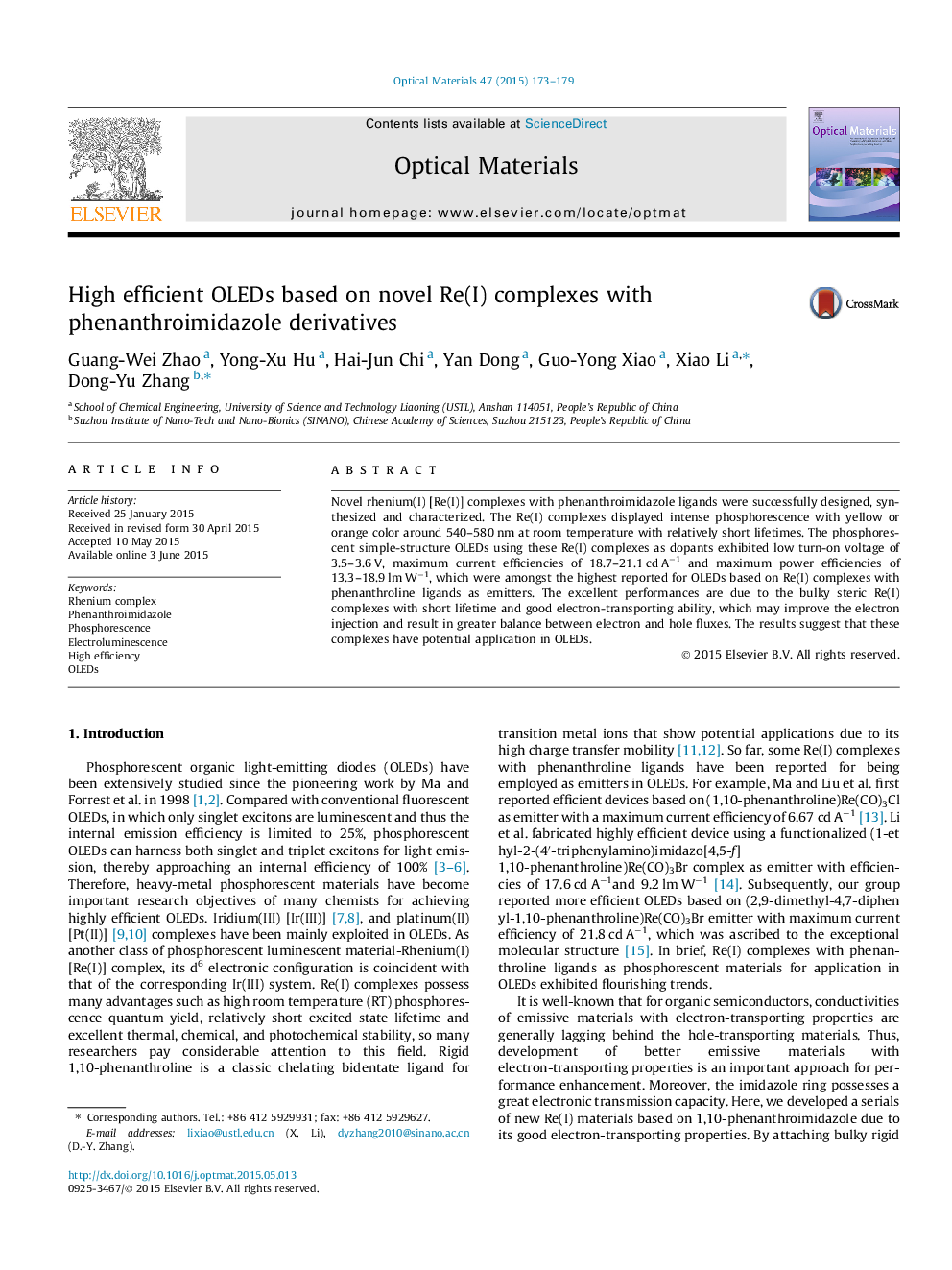| Article ID | Journal | Published Year | Pages | File Type |
|---|---|---|---|---|
| 1493697 | Optical Materials | 2015 | 7 Pages |
•Novel Re(I) complexes with phenanthroimidazole ligands were successfully synthesized.•The Re(I) complexes possessed short lifetime and good electron-transporting ability.•Influence of the substituents on optoelectronic properties of Re(I) complexes was investigated.•Highly efficiency simple-structure OLEDs using Re(I) complexes as emitters were fabricated.•Device’s efficiencies were the highest amongst the reported analogous-Re(I)-doped OLEDs.
Novel rhenium(I) [Re(I)] complexes with phenanthroimidazole ligands were successfully designed, synthesized and characterized. The Re(I) complexes displayed intense phosphorescence with yellow or orange color around 540–580 nm at room temperature with relatively short lifetimes. The phosphorescent simple-structure OLEDs using these Re(I) complexes as dopants exhibited low turn-on voltage of 3.5–3.6 V, maximum current efficiencies of 18.7–21.1 cd A−1 and maximum power efficiencies of 13.3–18.9 lm W−1, which were amongst the highest reported for OLEDs based on Re(I) complexes with phenanthroline ligands as emitters. The excellent performances are due to the bulky steric Re(I) complexes with short lifetime and good electron-transporting ability, which may improve the electron injection and result in greater balance between electron and hole fluxes. The results suggest that these complexes have potential application in OLEDs.
Graphical abstractFigure optionsDownload full-size imageDownload high-quality image (200 K)Download as PowerPoint slide
